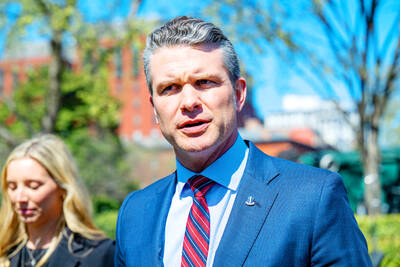Chinese Nationalist Party (KMT) legislators yesterday said the central government should request additional funding for outlying islands because a national fund ensuring their development had sunk dangerously low.
Twenty-two KMT legislators, including Chen Fu-hai (陳福海) and Tsao Erh-chang (曹爾忠), proposed that the government request a minimum budget of NT$3 billion (US$100,000) per year for the Offshore Islands Development Fund (離島建設基金) to facilitate construction on the nation’s outlying islands and ensure the sustainability of the fund.
The fund was established in 2001 with the stipulation that its financial resources should remain at NT$30 billion.
Under Article 16 of the Offshore Islands Development Act (離島建設條例), the government must help the fund ensure that this level is maintained by requesting annual budgets for a period of 10 years if necessary.
The government reached the goal by earmarking about NT$3.2 billion every year between 2001 and last year, and NT$1.2 billion this year.
However, about NT$3 billion was spent annually between 2001 and 2005, and about NT$1.2 billion per year between 2006 and this year, to subsidize construction projects on the islands.
The legislators said they were concerned about the financial status of the fund, as less than NT$10 billion remained after the expenditures from the past decade.
Tsao told the Executive Yuan’s Offshore Islands Development Committee last month that the fund could be completely consumed in four years if the government failed to appropriate new budgets for the fund.
Premier Wu Den-yih (吳敦義) has previously promised to seek the budget request. He said that construction projects on the outlying islands would not be affected by the budget concerns.

‘DENIAL DEFENSE’: The US would increase its military presence with uncrewed ships, and submarines, while boosting defense in the Indo-Pacific, a Pete Hegseth memo said The US is reorienting its military strategy to focus primarily on deterring a potential Chinese invasion of Taiwan, a memo signed by US Secretary of Defense Pete Hegseth showed. The memo also called on Taiwan to increase its defense spending. The document, known as the “Interim National Defense Strategic Guidance,” was distributed this month and detailed the national defense plans of US President Donald Trump’s administration, an article in the Washington Post said on Saturday. It outlines how the US can prepare for a potential war with China and defend itself from threats in the “near abroad,” including Greenland and the Panama

A magnitude 4.9 earthquake struck off Tainan at 11:47am today, the Central Weather Administration (CWA) said. The hypocenter was 32.3km northeast of Tainan City Hall at a depth of 7.3km, CWA data showed. The intensity of the quake, which gauges the actual effect of a seismic event, measured 4 in Tainan and Chiayi County on Taiwan's seven-tier intensity scale, the data showed. The quake had an intensity of 3 in Chiayi City and County, and Yunlin County, while it was measured as 2 in Kaohsiung, Nantou County, Changhua County, Taitung County and offshore Penghu County, the data showed. There were no immediate reports of

The Chinese Nationalist Party (KMT) is maintaining close ties with Beijing, the Democratic Progressive Party (DPP) said yesterday, hours after a new round of Chinese military drills in the Taiwan Strait began. Political parties in a democracy have a responsibility to be loyal to the nation and defend its sovereignty, DPP spokesman Justin Wu (吳崢) told a news conference in Taipei. His comments came hours after Beijing announced via Chinese state media that the Chinese People’s Liberation Army’s Eastern Theater Command was holding large-scale drills simulating a multi-pronged attack on Taiwan. Contrary to the KMT’s claims that it is staunchly anti-communist, KMT Deputy

RESPONSE: The government would investigate incidents of Taiwanese entertainers in China promoting CCP propaganda online in contravention of the law, the source said Taiwanese entertainers living in China who are found to have contravened cross-strait regulations or collaborated with the Chinese Communist Party (CCP) could be subject to fines, a source said on Sunday. Several Taiwanese entertainers have posted on the social media platform Sina Weibo saying that Taiwan “must be returned” to China, and sharing news articles from Chinese state media. In response, the Mainland Affairs Council (MAC) has asked the Ministry of Culture to investigate whether the entertainers had contravened any laws, and asked for them to be questioned upon their return to Taiwan, an official familiar with the matter said. To curb repeated